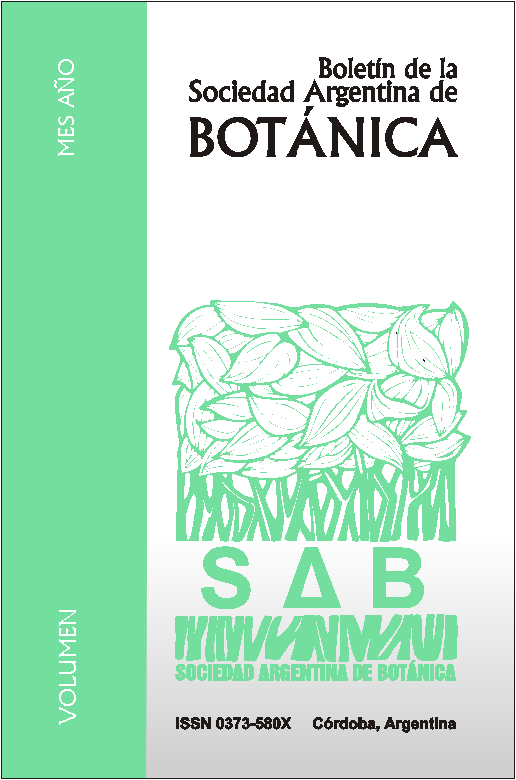General characteristics of airborne pollen in Montevideo city, Uruguay.
DOI:
https://doi.org/10.31055/1851.2372.v53.n2.20581Keywords:
Airborne pollen, meteorology, threshold levels, wind, Montevideo, Uruguay.Abstract
: This paper analyses daily and seasonal variations on pollen concentrations and the influence of meteorological conditions on the airborne pollen from June 2011 to May 2014. Data is also compared with results from a previous pollen survey from 2000-2001. Ninety-three taxa were identified, belonging to 49 trees and shrub taxa and 44 herbaceous taxa. The most important pollen sources were Poaceae, Platanus, Cupressaceae/Taxaceae, Eupatorieae type, Celtis, Urticaceae, Myrtaceae, Casuarina, Amaranthaceae, Cyperaceae, Fraxinus, Arecaceae, Ricinus communis, Moraceae, Myrsine, Ambrosia, Quercus, and Pinaceae. Pollen was recorded all year round but the main pollen season was from August to April. Inter-annual differences were observed on pollen indexes, dates and values of daily peak concentrations and monthly accumulated concentrations. Temperature, relative air humidity and wind speed and direction seem to be the most influential meteorological variables on pollen concentrations. The number of days that pollen concentrations are above moderate and high thresholds levels is estimated and woody and non-woody pollen concentrations would be above moderate levels on average 182 days per year.Downloads
Published
Issue
Section
License
Provides immediate and free OPEN ACCESS to its content under the principle of making research freely available to the public, which fosters a greater exchange of global knowledge, allowing authors to maintain their copyright without restrictions.
Material published in Bol. Soc. Argent. Bot. is distributed under a Creative Commons Attribution-NonCommercial-ShareAlike 4.0 International license.





